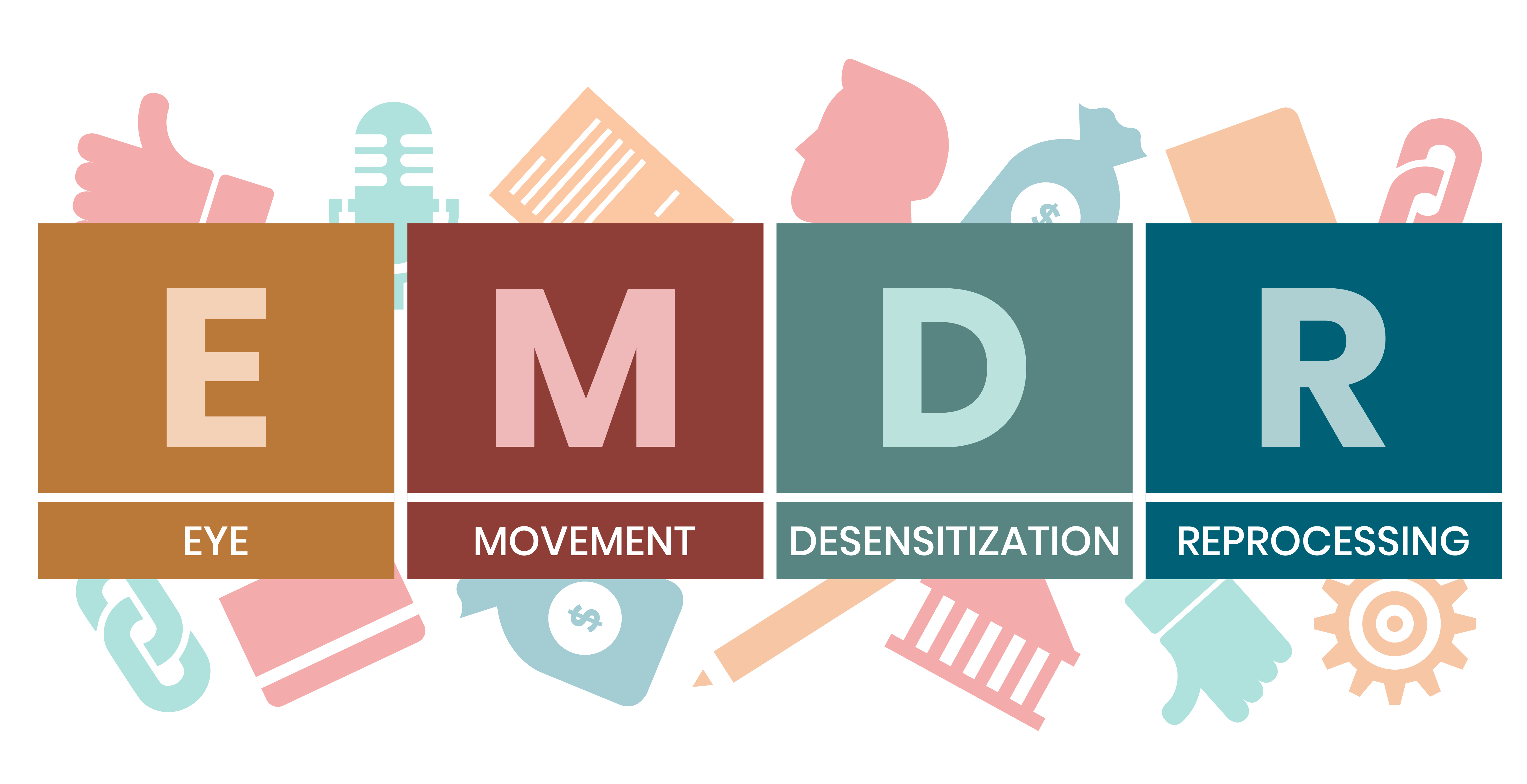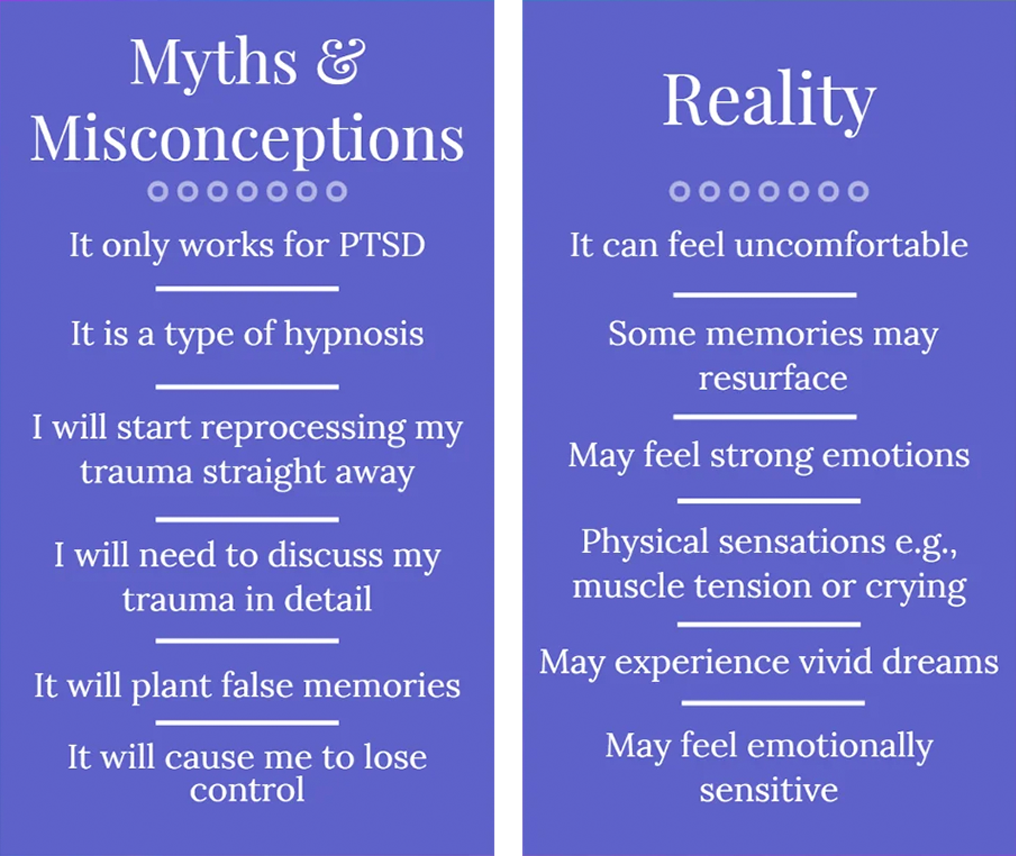Welcome to my practice!
My name is Lauren Chapman, and I am a dedicated and compassionate registered Mental Health Nurse with over 15 years of experience working in both child and adult mental health services.
“Throughout my career, I have been committed to supporting individuals and families on their mental health journeys, with a special focus on trauma and the profound impact it has had on people’s lives“
Lauren Chapman
Working with Adults and Children
I offer eye movement desensitisation and reprocessing (EMDR) therapy services to both adults and children, providing a supportive and tailored approach to meet the unique needs of each age group. Understanding that distressing experiences can impact individuals of all ages, my practice is dedicated to helping everyone heal and regain a sense of well-being.
Adults (18+)
For adults, EMDR can be highly effective in addressing a range of issues, including trauma, anxiety, phobias, Obsessive compulsive disorder (OCD), and more. Sessions are conducted in a safe, confidential environment where you can work through distressing memories and experiences at your own pace.

Children (5-18)
For children, I provide a gentle and age-appropriate approach to EMDR therapy. Recognising that children may find it difficult to visit a clinic, I can offer home visits when appropriate. This ensures that your child can receive therapy in a familiar and comfortable setting, which can be particularly beneficial for their sense of safety and security.
During home visits, I work closely with both the child and their family to create a supportive therapeutic environment. I use engaging and child-friendly methods to help them process distressing memories and develop coping strategies.
Lauren Chapman
I have trained in EMDR therapy for both adults and children, a modality I currently utilise effectively in my role within the NHS. My expertise in EMDR has allowed me to help individuals process and heal from their traumatic experiences, enabling them to lead more fulfilling lives.
I’d Love to Help
Frequently Asked Questions…..

What is EMDR?
EMDR (Eye Movement Desensitisation and Reprocessing) is a psychotherapy that enables individuals to heal from the symptoms and emotional distress resulting from disturbing life experiences. It has been shown to be effective in treating psychological trauma stemming from various experiences such as childhood abuse or neglect, natural disasters, war-related experiences, assaults, surgical trauma, road traffic accidents, and workplace accidents. EMDR is also increasingly used to help with other issues, including phobias and OCD.
How Does EMDR Work?
When someone experiences a distressing event, their brain may become overwhelmed, preventing the information from being processed as a normal memory. This can cause the distressing memory to become ‘frozen’ on a neurological level. Recalling the memory can lead to intense re-experiencing of the event’s sensory and emotional components.
EMDR uses alternating left-right stimulation of the brain through eye movements, sounds, or taps to help reprocess these ‘frozen’ memories. This stimulation appears to facilitate the brain’s natural processing abilities, reducing the intensity of the memories and making them seem more like ordinary memories. The process is similar to the natural rapid eye movement (REM) sleep phase, where the eyes move rapidly from side to side.
How Many Sessions Will You Need?
The number of EMDR sessions required varies depending on the specific problem and individual history. Research has shown that a single traumatic event can often be processed within 3 sessions for 80-90% of participants. The overall amount of therapy needed will depend on the complexity of your history and the number of distressing events to be processed.
What Happens During a Session?
EMDR is a comprehensive therapeutic approach that goes beyond just eye movements. It involves a set of principles, protocols, and procedures aimed at reducing distress as efficiently as possible.
In your initial session, your therapist will gather your history, discussing your current distress, past difficulties, physical health, medication use, and support system. If EMDR is deemed suitable, your therapist will explain the EMDR model and theory to you.
Your therapist will guide you through relaxation exercises, such as ‘safe or pleasant place’ visualisations, deep muscle relaxation, and breathing techniques. Once you are prepared, you will target a distressing memory using eye movements or other forms of bilateral stimulation. You will focus on an image representing the event, along with associated negative and positive thoughts, feelings, and bodily sensations.
During the session, your therapist will conduct sets of eye movements while you hold the image in mind. After each set, your therapist will ask what came to mind or what you noticed. Initially, the memory might be intensely distressing, but this typically decreases as the memory is reprocessed. The session continues until your distress is significantly reduced, and you will end with calming techniques.
Will My Therapist Use Any Equipment?
EMDR can involve various methods to create bilateral stimulation:
- Manual Eye Movements: Following the therapist’s moving fingers.
- Light Bar: Following a moving light across a bar.
- Auditory Stimulation: Alternating sounds or clicks through headphones.
- Tactile Stimulation: Alternating taps on your hands or holding small vibrating devices.
These methods help facilitate the reprocessing of distressing memories.
Frequently Asked Questions…..
What is EMDR?
EMDR (Eye Movement Desensitisation and Reprocessing) is a psychotherapy that enables individuals to heal from the symptoms and emotional distress resulting from disturbing life experiences. It has been shown to be effective in treating psychological trauma stemming from various experiences such as childhood abuse or neglect, natural disasters, war-related experiences, assaults, surgical trauma, road traffic accidents, and workplace accidents. EMDR is also increasingly used to help with other issues, including phobias and OCD.
How Does EMDR Work?
When someone experiences a distressing event, their brain may become overwhelmed, preventing the information from being processed as a normal memory. This can cause the distressing memory to become ‘frozen’ on a neurological level. Recalling the memory can lead to intense re-experiencing of the event’s sensory and emotional components.
EMDR uses alternating left-right stimulation of the brain through eye movements, sounds, or taps to help reprocess these ‘frozen’ memories. This stimulation appears to facilitate the brain’s natural processing abilities, reducing the intensity of the memories and making them seem more like ordinary memories. The process is similar to the natural rapid eye movement (REM) sleep phase, where the eyes move rapidly from side to side.
How Many Sessions Will You Need?
The number of EMDR sessions required varies depending on the specific problem and individual history. Research has shown that a single traumatic event can often be processed within 3 sessions for 80-90% of participants. The overall amount of therapy needed will depend on the complexity of your history and the number of distressing events to be processed.
What Happens During a Session?
EMDR is a comprehensive therapeutic approach that goes beyond just eye movements. It involves a set of principles, protocols, and procedures aimed at reducing distress as efficiently as possible.
In your initial session, your therapist will gather your history, discussing your current distress, past difficulties, physical health, medication use, and support system. If EMDR is deemed suitable, your therapist will explain the EMDR model and theory to you.
Your therapist will guide you through relaxation exercises, such as ‘safe or pleasant place’ visualisations, deep muscle relaxation, and breathing techniques. Once you are prepared, you will target a distressing memory using eye movements or other forms of bilateral stimulation. You will focus on an image representing the event, along with associated negative and positive thoughts, feelings, and bodily sensations.
During the session, your therapist will conduct sets of eye movements while you hold the image in mind. After each set, your therapist will ask what came to mind or what you noticed. Initially, the memory might be intensely distressing, but this typically decreases as the memory is reprocessed. The session continues until your distress is significantly reduced, and you will end with calming techniques.
Will My Therapist Use Any Equipment?
EMDR can involve various methods to create bilateral stimulation:
- Manual Eye Movements: Following the therapist’s moving fingers.
- Light Bar: Following a moving light across a bar.
- Auditory Stimulation: Alternating sounds or clicks through headphones.
- Tactile Stimulation: Alternating taps on your hands or holding small vibrating devices.
These methods help facilitate the reprocessing of distressing memories.
Get In Touch
Call
07704425248
admin@laurenchapman.co.uk
Address
The Tower Clinic
8 Tinshill Lane
Cookridge
Leeds
LS16 7AP
Hours
Please contact me for availability

